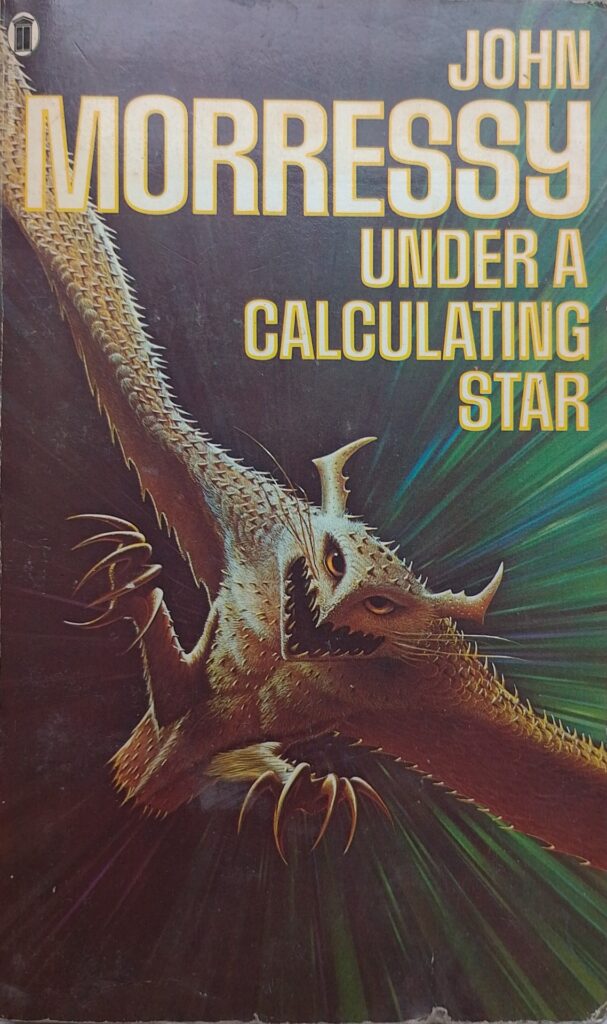First published 1975. New English Library paperback, 19797, pp 157, c.52,000 words.
This is the third part of six books all set in the same future, one where, centuries ago, the people of ‘Old Earth’ spread through the galaxy, seeding it with technology for faster-than-light travel, but for which the current inhabitants have lost the knowledge of how to recreate it. The Old Earthers fled their home planet after some catastrophe, and they have intermingled with other intelligent races that populate the galaxy, mostly harmoniously. All the current occupants of the galaxy are is some way recognisably human, with particular attributes exaggerated to distinguish them. For some races valour is all important – death in battle is the most glorious end. However, the weapons are mostly bladed of one sort or another; a few archaic pistols are also used. In the background are the fearsome and implacable Rhin, but they don’t feature significantly in this book.
The story here overlaps with that in the earlier volumes. One significant section is a retelling of an episode in one of the previous books, but seen from a different character’s point of view, which is rather fun. However, this book can stand alone: it is not essential to have read the others first.
The opening is set on a spaceship with a small crew of diverse races, drawn mostly from those familiar from the earlier books. They are after a fabled treasure. The first third of the book follows this quest in full ‘dungeons and dragons’ style. There are some nice descriptions: a spaceship graveyard, the forbidden citadel, and imaginatively drawn hazards to be overcome. However, the leader of the crew seems to have been well prepared and marches straight to the treasure chamber. This is perhaps a missed opportunity to make a more unpredictable journey.
Once that part is over, the remaining characters decide on what to do next, and their paths diverge. We are presented with two quite different stories by the end. One of these finishes with a brief section from another character’s point of view, which seemed rather discordant. The book ends on a rather optimistic note: one of the junior characters envisions a bright future for his people, one which he has set in motion.
Morressy writes fluently, and this is an easy read. The principles here are rather more interesting than those of his earlier books: they have considerable shades of grey, and are perhaps all the more ‘human’ and relatable for that. The story is still a rather picaresque journey through a set of well imagined locations, as in the earlier books, but here the individual episodes are explored in more depth. It is an entertaining, if slight, tale.
Wikipedia biography of Morressy: https://en.wikipedia.org/wiki/John_Morressy
SF Encyclopedia biography of Morressy: https://sf-encyclopedia.com/entry/morressy_john
Others’ reviews of the book: https://www.goodreads.com/book/show/1975347.Under_a_Calculating_Star?from_search=true&from_srp=true&qid=v5xj6cl6nr&rank=1
© William John Graham, April 2024

